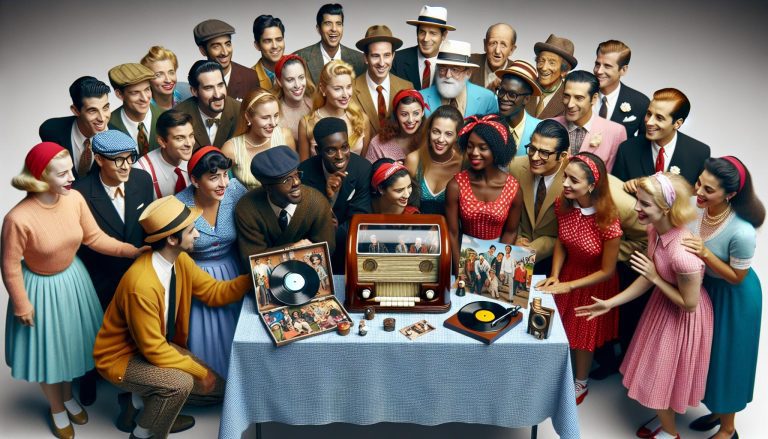Powerful Against Child Labour Slogans to Ignite Change
Child labor is a persistent global issue that strikes a chord in the hearts of many. You’re likely familiar with the sight of slogans emblazoned on banners and t-shirts, but have you ever stopped to consider their power? Against child labor slogans aren’t just catchy phrases; they’re a rallying cry for change, a voice for the voiceless.
Crafting a potent slogan is an art form that can stir emotions and spur action. These short, impactful statements encapsulate the struggle against child exploitation and serve as beacons of hope for a brighter future. As you dive deeper into the world of advocacy, you’ll discover how these slogans are more than words—they’re weapons in the fight for children’s rights.
The Power of Against Child Labor Slogans
You understand the importance of a strong message, especially when it comes to advocating for children’s rights. Slogans against child labor are more than just words strung together; they’re a powerful tool in the campaign to end child exploitation. Whether plastered on billboards or shared on social media, these slogans have the ability to draw attention and unite people under a common cause.
Slogans serve as a wake-up call to society, reminding us that every child deserves the freedom to enjoy their childhood without the burden of labor. With the right phrasing, a slogan can highlight the harsh realities of child labor that are often hidden from public view. It’s not just about creating awareness; it’s about inspiring people to take action. These powerful statements become the taglines of movements, the kind that stick in your mind and motivate you to lend your voice to the voiceless.
Effective slogans against child labor often use compelling language that resonates emotionally. They don’t just inform; they provoke feelings of empathy and outrage, pushing you to demand change. When you hear a slogan like, “Childhood is for learning, not labor,” you’re not just reading a sentence; you’re picturing a child’s lost potential and a future compromised.
- “Stop child labor; nurture every dream”
- “Hands to books, not bricks”
These succinct messages echo the sentiments of countless individuals who believe that the innocence of childhood should be preserved and protected. Remember, the fight against child labor is ongoing, and your support can make a tangible difference. As you continue reading, think about the slogans that have caught your ear and how they’ve shaped your perspective on this global issue. These rallying cries aren’t just speaking out; they’re calling for you to join in and help make a significant impact.
Understanding the Impact of Slogans

When you hear a powerful slogan against child labor, it sticks with you. It’s not just a scrap of language; it’s designed to hit home and make you stop in your tracks. You see, a great slogan works a bit like a memory hook; once it’s in your mind, it’s hard to shake off. And that’s exactly what you want when the aim is to shed light on the severe issue of child labor.
Slogans create a collective identity around a pressing issue. They’re short, sharp, and full of meaning. They say so much in just a few words, painting a vivid picture of what’s at stake. And when they resonate with you, they don’t just pass through your thoughts uninvited—they linger, they provoke, they call for your attention and action.
But why do these concise phrases pack such a punch? It’s their unmistakable clarity. In a world teeming with information overload, a straight-to-the-point slogan cuts through the noise. It doesn’t just speak; it shouts above the din.
Here’s the kicker: slogans are endlessly adaptable. You can wear them on a T-shirt, shout them during a rally, spread them across social media, or use them in educational materials. They work everywhere because their punchiness transcends boundaries and breaks through cultural barriers.
- They’re memorable
- They stir emotions
- They call to action
- They unite people
A masterful slogan doesn’t just echo in the corners of your mind; it propels you forward, motivates you to join the chorus. When you think about child labor, these slogans are more than words—they’re a clarion call. You’ve got the message, you feel the tug in your chest—it’s personal now. And that’s when you know the slogan has done its job: when you move from passive listener to active participant.
So next time you hear a slogan about child labor, take a moment. Listen to what it’s really saying. Let it move you. Because it’s not just about awareness—it’s about awakening.
Crafting Potent Slogans: An Art Form

Creating slogans that strike a chord with the audience is no small feat. You’re aiming to encapsulate a movement in just a few, powerful words. It’s an art form that requires a keen understanding of your audience and the message you need to deliver with precision. To do this, it’s crucial to synthesize the essence of your campaign into a message that’s both intuitive and impactful.
You’ll want to start by brainstorming keywords related to child labor and the emotions you aim to evoke. Ask yourself: what words or phrases resonate with the struggle against this injustice? This exercise is not just about finding the right words; it’s about crafting a message that is both compelling and calls to action.
Consider these points when you design your next slogan:
- Keep it short: Long-winded phrases lose punch. The best slogans are brief yet profound.
- Strength in simplicity: A straightforward slogan is more likely to stick in someone’s memory.
- Use action words: These words inspire and motivate the audience to take a stand.
- Be memorable: Rhythm, rhyme, and repetition can make your slogan more catchy.
Once you’ve drawn up a list, refine it. Cut out what’s unnecessary and simplify until you can’t simplify anymore. You’re aiming for a balance between brevity and expressiveness – something that conveys the seriousness of child labor while also being easy to remember and share.
Try out your slogans on a small group to test their reactions. Are they moved? Do they feel compelled to learn more or even join the cause? Your slogan’s effectiveness is measured by the discussion and action it ignites. If your trial audience starts talking about child labor and its repercussions, you’re on the right track.
Remember, the most enduring slogans often emerge from a deep understanding of the issue at hand. So immerse yourself in the cause. Experience and empathy are priceless when you craft a message that has the potential to trigger social change.
The Symbolism of Short, Impactful Statements

When you’re trying to get a powerful message across, every word counts. In the fight against child labor, slogans serve as the sharp edge of the campaign, cutting through the noise and striking at the heart of the issue. Short, impactful statements pack a punch because they are not just words but symbols—each one carrying weight beyond its size.
Think of them as the flash of a lighthouse in a storm—guiding ships safely to harbor. Slogans against child labor shine a light on dark practices and guide the social conscience towards safer, more ethical shores. They encapsulate complex problems in a nutshell, making it easier for people to comprehend and remember the issue at hand.
Keep It Short and Strong
- Be direct: Speak to the heart of the matter with no room for ambiguity.
- Be bold: Use strong, evocative language that resonates and sticks in the mind.
- Be clear: Clarity trumps cleverness. The message should be accessible to everyone.
Your goal is to create a rallying cry that doesn’t just inform but also inspires action. Think of iconic statements from history—how they’ve moved people to stand up and take part in great causes. Your slogan should aspire to join those ranks.
Balance is key in these statements. They should be simple enough for a child to remember but profound enough to awaken the empathy and outrage of adults. They should challenge the status quo without alienating those who are unaware of the issue. Use the language of common experiences and shared values to build bridges, not barriers.
As you refine your slogans, remember that they are the seeds of change. Planted in the right minds, they can grow into movements that transform society. They’re not just words—they’re the symbols of hope and the banners under which change marches forward.
Slogans as Weapons in the Fight for Children’s Rights

Slogans are more than just catchy phrases; they’re a rallying cry for activists and a call to action for society. When they’re expertly crafted, they have the power to stir the hearts and minds of communities and policymakers alike. Short, powerful, and memorable—these are the attributes of a hard-hitting slogan against child labor that sticks with you and sparks change.
Imagine walking down the street and seeing a bold banner proclaiming, “End Child Labor, Nurture the Future.” This statement does more than condemn exploitation; it paints a picture of a world where children are freed from labor to pursue education and dreams. Slogans like these aren’t passive—they demand a reaction and challenge the status quo.
- Keep it local: Reflect community values
- Empower the voiceless: Give kids a platform
- Aim for the heart: Stir emotions for change
Social media has transformed slogan dissemination into a swift venture. Hashtags and viral posts allow a slogan to transcend borders and linguistic barriers, fostering a global response. This is key because child labor isn’t a localized problem—it’s a global crisis that mandates a universal response.
Your slogan’s visibility is crucial. Partner with well-known influencers, leverage the reach of digital platforms, and seek collaboration with NGOs to amplify your message. When you’re crafting that perfect phrase, keep in mind that it should be adaptable. It must resonate in suburban billboards as much as it does in the dense text of policy proposals.
Remember, a successful campaign against child labor uses slogans not as mere taglines but as the forefront of advocacy. With concise language and evocative imagery, your slogan can become the signature of the movement, uniting disparate efforts into one cohesive strategy to protect every child’s rights.
Conclusion
Harnessing the power of language, you’ve seen how a well-crafted slogan can become the heartbeat of a movement against child labor. It’s your voice and your commitment that can drive the change, transforming words into a global chorus for children’s rights. Remember, each slogan you share echoes the values you stand for and the future you envision for the world’s youth. Stand firm in your advocacy, and let your words be the catalyst in the relentless pursuit of a child-labor-free world. Your action, no matter how small, reverberates hope and ignites progress.







